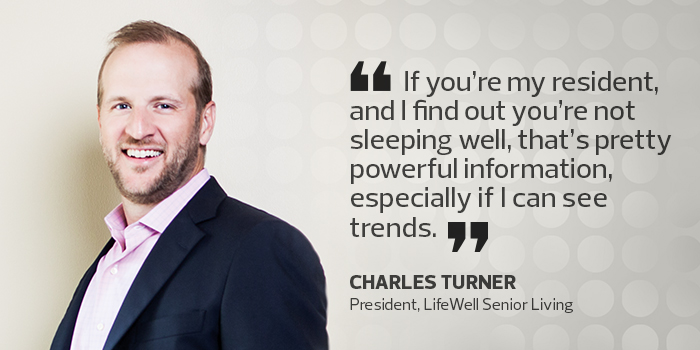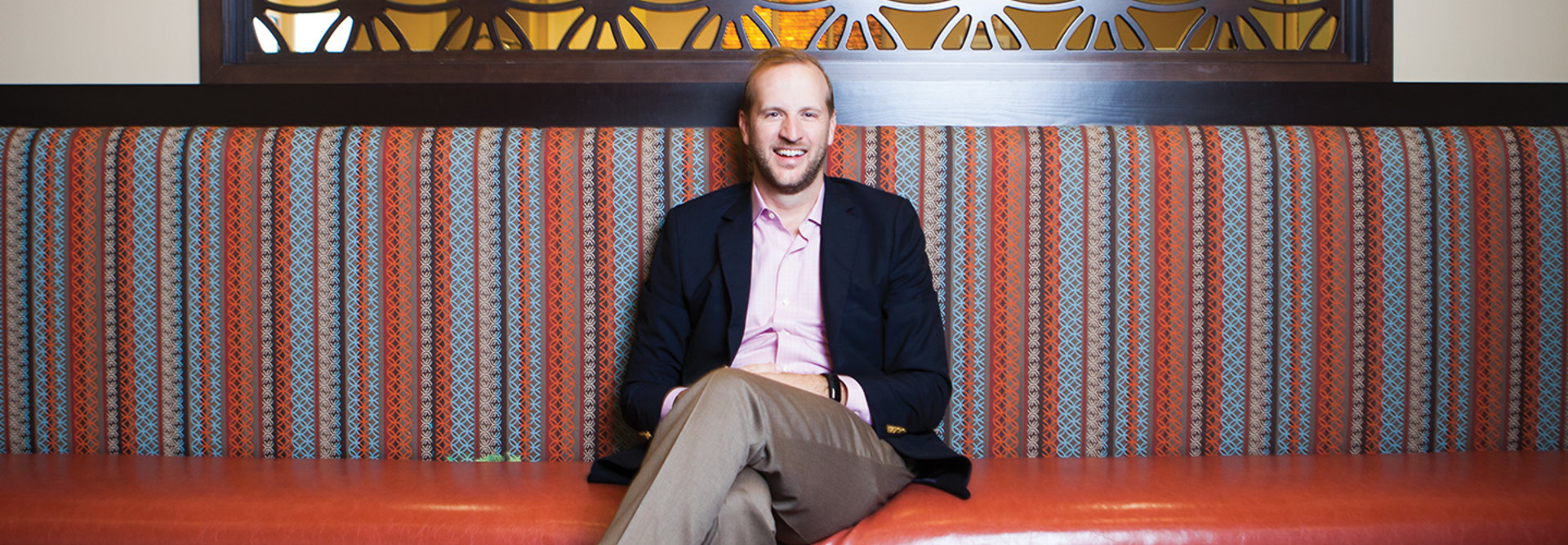For Senior Communities, Wearables Can Keep Residents and Staff on a Healthy Track
Much of the promise of deploying wearable devices to residents of senior living communities lies in reporting meaningful health trends that might otherwise go undetected.
Although developers tend to create wearable technology with younger users in mind, the data they provide arguably could be more valuable for older populations, says Charles Turner, president of Houston-based LifeWell Senior Living.
Newer devices, for instance, can monitor metrics, including movement, food intake, sleep patterns and socialization. Such information, when viewed over time, holds potential to guide staff and other care providers in taking proactive steps to prevent negative health outcomes, Turner says.
“I have a wearable that lets me know, ‘Charles, you didn’t sleep well last night,’” he says. “I already know that about myself. But if you’re my resident, and I find out you’re not sleeping well, that’s pretty powerful information, especially if I can see trends.”
LifeWell and Waltham, Mass.-based Benchmark Senior Living represent a growing number of senior communities deploying wearables and analytics applications with an eye to keeping residents happier, healthier and more active.
Wearable Data Gives Doctors a Jump on Problems
In early 2017, LifeWell — which has 13 facilities in four states — field-tested a new senior-specific wearable, the CarePredict Tempo. The tool allows facilities to track residents’ locations, eating patterns and socialization habits. What’s more, the device detects changes in speed and gait, which can help predict falling episodes.

“The point of collecting data is to analyze it and determine if there is a potential problem,” says Laurie Orlov, analyst and founder of Aging in Place Technology Watch.
The Tempo pilot was “very successful and exciting,” says Turner, who adds that LifeWell plans to roll out wearables to residents at all of its newly opened facilities, as well as integrate existing facilities down the line.
The hope is that staff will intervene when data reveals potentially harmful patterns.
“We want to be able to give feedback to residents and say, ‘Let’s check on your goals,’ ” he says. “It’s no different from any millennial with a wearable, setting goals around activity levels.”
Benchmark Senior Living Tracks Progression with Analytics
Benchmark Senior Living also recently tested wearables. Last fall, the organization, which runs more than 50 communities in seven Northeast states, piloted devices with 80 seniors at two facilities.
The goal of the pilot — conducted in partnership with Big Cloud Analytics, CDW and Intel — was to “understand how it would all work together and what it would mean,” says Moulay Elalamy, vice president for IT at Benchmark. “It was really connecting disparate things — the hardware and software — to create a solution that people haven’t thought of before.”
Benchmark took a reactive approach during the study, Elalamy says. After events such as hospitalizations or falls, researchers examined data gathered immediately before the event.
“If someone had an adverse event, for example, we looked at the data for the seven days prior,” he says. “We did see some patterns there — some data changes about four to six days before the event.”
Benchmark didn’t reach a point where researchers could use data trends to accurately predict health outcomes, but Elalamy says he sees the potential.
“It made us think about how we would incorporate some of these technologies in the next wave of innovation,” he says. “I think that a few years from now, it will seem logical that we track those things. I have no doubt that it will happen — this is the future.” Still, despite the promise, challenges associated with normalizing wearables in senior communities loom large.
Adoption Hurdles Keep Wearable Use at Bay
Because most devices are not designed for seniors, even small matters like recharging present considerable hurdles, Elalamy says.
“They’re made for the user who can take it off at night and are able to plug it in themselves,” he says. “For us, it is a bit more complex. Do you buy two and just switch back and forth? As it stands, it is too complicated and too expensive.”
What’s more, some senior living facilities lack the basic infrastructure to support wearables use, meaning that oftentimes, organizations must choose between making an upgrade to their Wi-Fi or, for instance, purchasing new furniture, Turner says.

Deploying wearables also requires an investment in staff training.
“You’re implementing new processes, and sometimes that requires change. But really, the biggest challenge is to teach people to ask questions about what we can know about our residents,” he says. “We always ask, ‘Can the technology do this?’ And the answer is, ‘It could. It’s a matter of programming.’ But you have to be creative enough to ask the question.” Additional challenges persist around the collection and storage of information, Elalamy says.
“You are capturing three to five data points every few seconds, which means billions of records in a short time span. Where do you store it? Who has access to it? Is it encrypted from one system to the other? It all needs to be outlined as we design the solution,” he says.
Communities Push Toward Wearable Innovation
Andrew Smith, director of strategy and innovation for Brookdale Senior Living in Brentwood, Tenn., calls wearable technologies exciting but also challenging in the short term.
“First, they need to intimately connect to community life,” he says. “Maybe in the future, they could connect to smart doors. But that requires a lot of infrastructure changes to our buildings, which is expensive.
However, the Thrive Center, a technology and education nonprofit facility that will showcase tools for healthy aging, hopes to shift the narrative that innovation in senior communities is overly difficult.
Capital grant funding helped launch the Louisville, Ky., facility, which opens to the public in November. One tool that will be displayed at the center is the Sensogram Technologies SenSOS, which detects falls in real time and sends alerts for emergency care. It also provides continuous vital-sign monitoring, and readings for users’ heart and respiration rates. Turner says that convincing LifeWell residents to adopt wearables hasn’t been as challenging as he initially thought.
“We always assumed residents would be reluctant, but it turns out that they’ve really adopted it,” he says. “Our residents are proud to be innovators on this. We haven’t had a lot of complaints.”









